How Much Food to Feed a Miniature Dachshund
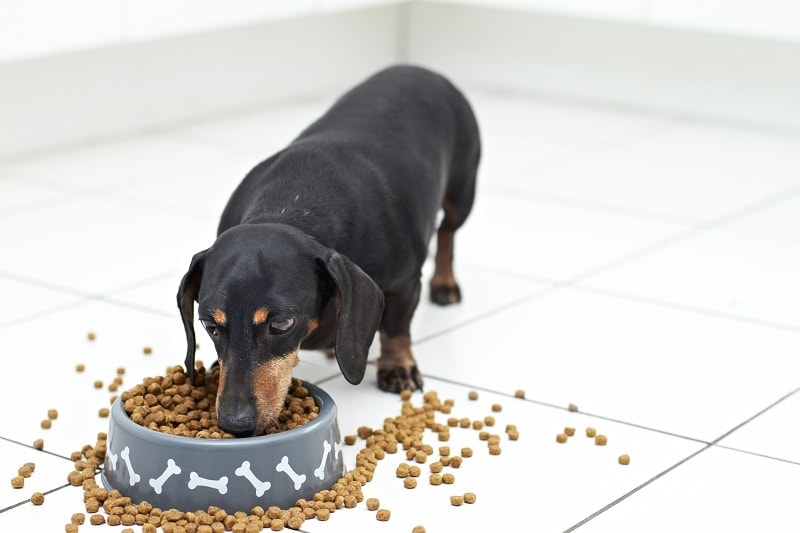
Proper nutrition is the key to good health for your Dachshund or any pet. It provides the raw materials that ensure proper development, which can go a long way into keeping your pup healthy into his advanced years. The nutritional needs of your dog will vary with his life stage, with puppies requiring more energy and nutrient-dense foods.
The essential thing is to make sure that your Dachshund stays at his ideal weight. That will reduce his risk of chronic diseases, like diabetes. It will also safeguard him against back issues because of his long body. Our guide will provide you with a comprehensive look at how your pup's needs will change throughout his lifetime. We'll also provide some valuable insights into other things that can affect his health.
A Dachshund reaches adulthood at about 12 months. If you continue to feed him puppy food through this time, the amount of kibble that you should give him will go down because it's more energy-dense than adult diets. The chart below assumes you're following this plan before transitioning him to the next life-stage product.
At that point, you can base your pup's intake based on his current weight and activity level. Because adult foods have fewer calories and less protein, you can feed your dog more while keeping an eye on his body condition. We suggest sticking to a twice-a-day feeding schedule to prevent your pooch from gorging himself at mealtime. It will also give enough energy throughout his day.

How Much to Feed a Dachshund Puppy — Feeding Chart
Age of Puppy Quantity of Food Per Day Number of Meals Per Day 2 months 6-12 ounces 4 3 months 7-15 ounces 4 4 months 7-15 ounces 3 5-6 months 7-16 ounces 3 7-8 months 6-12 ounces 2 9-10 months 5-11 ounces 2 10-12 months 4-11 ounces 2
Source: https://www.royalcanin.com/us/dogs/products/retail-products/dachshund-puppy-dry-dog-food
What to Feed My Dachshund Puppy
Most new pet owners prefer to feed their dogs dry food. You have control over how much your pup eats. It's convenient and easy to measure out for each serving. Some people also object to the smell and consistency of canned food. The other advantage is that you can leave it out for more than 30 minutes without fear of it spoiling.
Wet food carries that risk. However, it is often tastier to a dog, so they'll gobble it up without worry of any remaining in the bowl. We strongly urge you not to give your pup raw food. There are risks of poisoning from foodborne parasites for both you and your pet. The term raw is a red flag in itself. That requires safe handling, which many households aren't equipped to provide.
We're not alone in this recommendation. The American Veterinary Medical Association shares our concerns. The fact remains that dogs are far removed from their early life as hunters and predators. Canines have evolved with their contact with people. Their digestive systems have adapted, too. Even the question of whether dogs are carnivores is subject to debate.
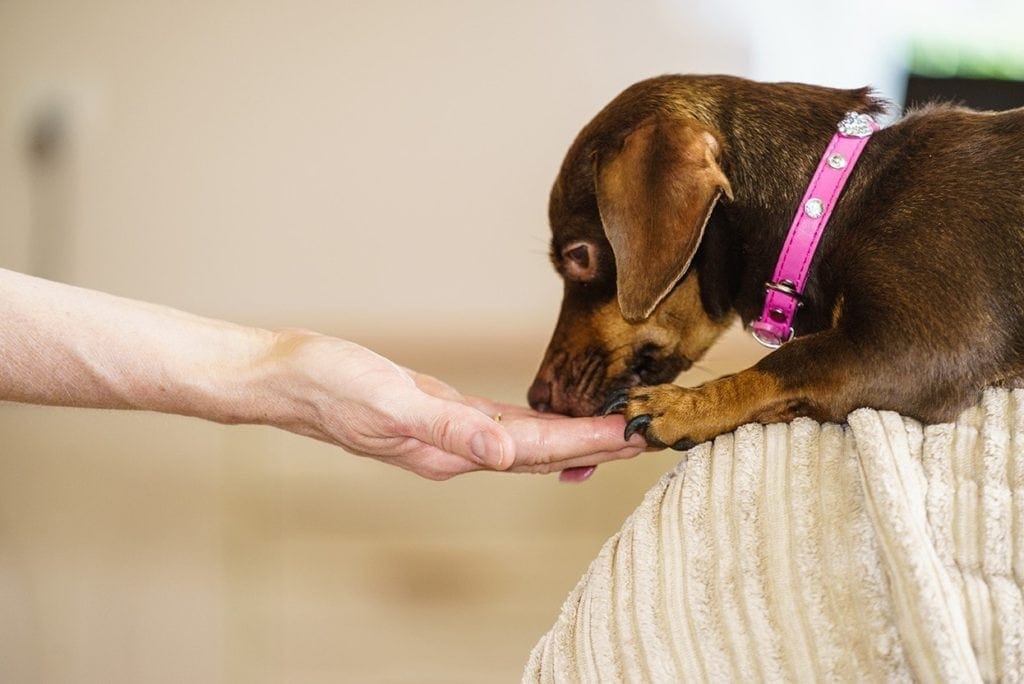
Avoiding Underfeeding & Overfeeding
We have to address the elephant in the room when it comes to feeding a Dachshund. This breed is prone to weight gain. The risk increases if you spay or neuter your pet because of the change in their metabolism. The change will lower their metabolism, which, in turn, affects your pup's recommended daily caloric intake to stay at a healthy weight.
Underfeeding is also a risk for smaller dogs because of the effects of hypoglycemia if they're not getting enough to eat. Growth and development take a lot of energy, i.e., calories. That's why puppy foods differ from diets formulated for adults. They also need higher amounts of nutrients to support this time in your pet's life.
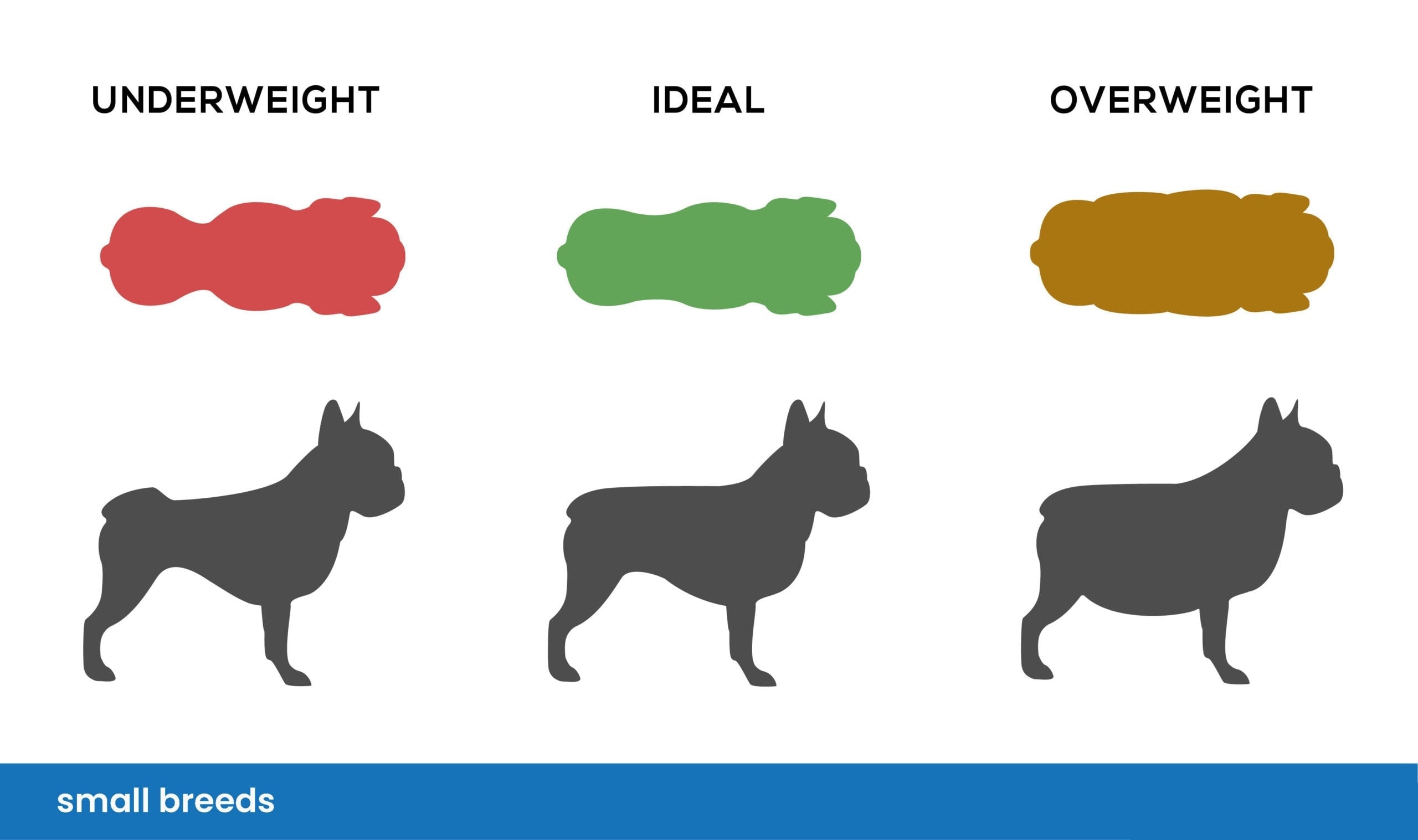
When to Switch from Puppy to Adult Food
Small breeds like the Dachshund mature more rapidly than larger dogs like a Great Dane. That may seem contrary, given the sizes of the pups. However, it also involves sexual and physiological maturity, which are not always visible. Those factors are the benchmarks for making the switch from puppy to adult food.
It's essential to understand that foods for puppies and adults differ on a lot of scores. Young dogs need more calories and a higher dose of many vital nutrients. Feeding an adult these diets is a recipe for weight gain and obesity. That's something you must avoid with a Doxie. It puts undue stress on his back, which can lessen his quality of life.
Why Won't My Dachshund Puppy Eat?
Occasionally, you'll find the finicky pup. That's unusual for Dachshunds, which are often quite food-motivated. Therefore, we suggest limiting treats to training aids to curtail the risk of unhealthy weight gain and its added health risks.
When investigating why your Doxie won't eat, we have to tick off the obvious that your pup doesn't like the taste or texture of the food. Either one could turn off your dog from his regular diet. It doesn't help that some manufacturers tweak their recipes. It's especially frustrating if you have a picky canine.
How Much to Feed an Adult Dachshund?
The best gauge of how much to feed your Dachshund is his body condition. Many factors come into play, including his activity level and the food you give your pet. You can get the ideal handle on the amount by monitoring your pet's body condition. You should be able to feel his ribs without them seeming boney.
If there is a thick abdominal fat layer, he's probably overweight. It's essential to remember that the feeding guidelines, while required, are just that, guidelines. Feel free to adjust your Doxie's intake to keep him at his healthy weight. Limiting treats is an excellent way to make this task easier for you and your family.
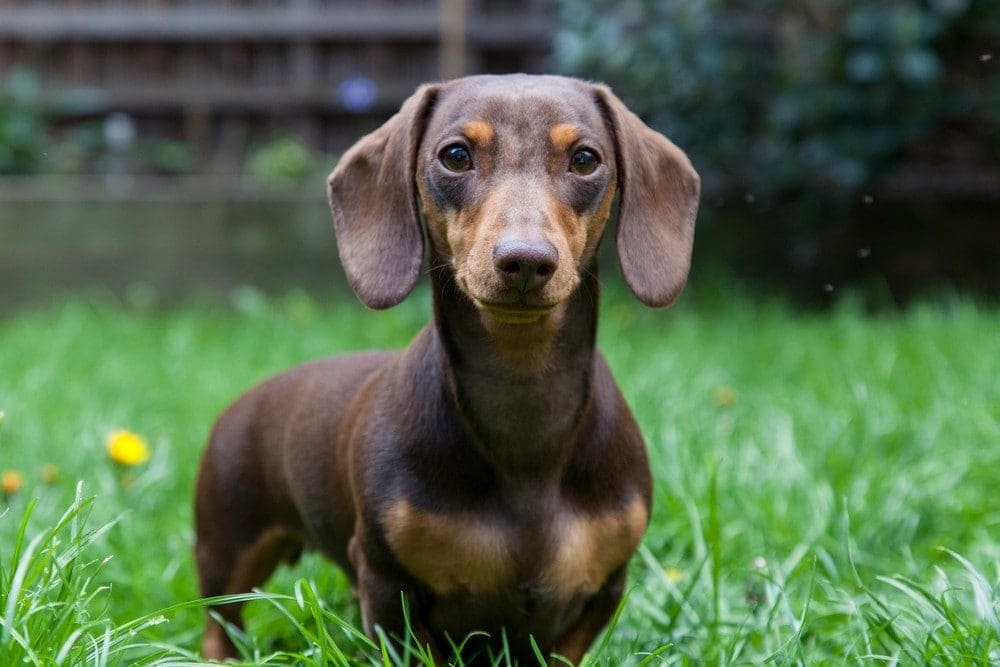
Dachshund Feeding Guide for Seniors
Senior dogs need fewer calories for several reasons. The most obvious is that they are less active. Optimal weight control involves both activity and intake control monitoring. Both are imperative. Other factors also come into play, such as arthritis and joint health. Therefore, it's essential to keep all of these things in the mix.
Commercial dog foods that contain glucosamine are a wise choice. This supplement can make it easier and more comfortable for your pooch to stay active for those daily walks. Likewise, products that contain omega-3 and omega-6 fatty acids will support healthy skin and improve the appearance of your pet's coat.
Doxies are relatively long-lived, with a lifespan that can reach 16 years. The transition to senior food depends on the individual dog. We suggest consulting with your veterinarian about when it's appropriate to make the switch. You should make the change slowly add a bit of the new diet to his current one over several days. It will make it easier on his digestive system.
Why Is My Dachshund Always Hungry?
Active dogs will blow through the energy from their caloric intake quickly. That's particularly true with young pups in a household with children. However, don't be tempted to leave a bowl of food out all day long. First, there's the concern over spoilage. Even dry foods will go bad after a while. The primary reason rests with weight control.
Free-feeding a dog makes it more difficult to determine how much he's getting in a day. That could spell disaster for keeping your pup at his ideal weight. Some pets are more food-motivated than others. If that describes your Dachshund, he'll probably eat more than he should if food is always available.
Even using a feeder is problematic for some pets. A dog isn't as good at pacing themselves to have something to eat all day long. That's your job with set feeding times. It's also an excellent way to make sure that he is eating. A change in his intake is a good indicator of a potential health issue, whether it's an increase or decrease in the amount.
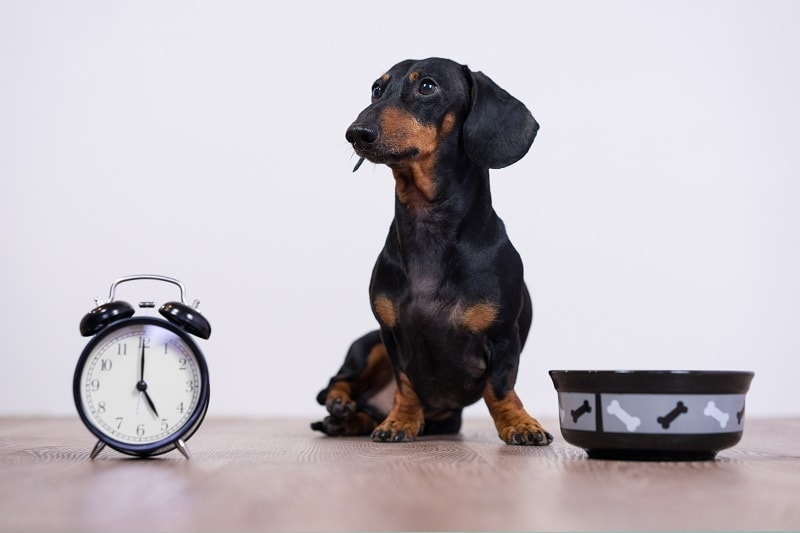
What Foods Are Bad for Dachshunds?
High caloric food stands out as bad foods for Doxies. That's why it's a smart plan to limit treats to only 10% of your pup's daily caloric intake. Better yet, reserve them as training aids. The Dachshund often has a stubborn streak that giving them something tasty for obeying could fix. It'll also help strengthen the bond between you and your pet.
Other foods that you should avoid giving your Doxie are the same that are toxic for all dogs. They include:
- Grapes
- Raisins
- Onions
- Garlic
- Chocolate
- Macadamia nuts
We suggest that you avoid giving your pup any table scraps, if just because of his propensity for gaining weight. Besides, it's next to impossible to get that genie back in the bottle if you encourage this bad habit. Stick with a commercial diet formulated for small breeds to keep your pet healthy.

Conclusion – How Much to Feed a Dachshund
Few dogs are as sweet and lovable as the Dachshund. It's part of what makes them such a joy to own. Knowing how much to feed a Dachshund is critical to a healthy diet, and is one of the best ways to provide your canine BFF with a good quality of life. It will ensure proper development and an excellent start in life. As you've seen, your pet's needs will change. The primary goal is that he stays at an ideal weight. It's the best thing you can do for your pup.
Featured Image Credit: dogboxstudio, Shutterstock
Source: https://www.hepper.com/how-much-to-feed-a-dachshund/
0 Response to "How Much Food to Feed a Miniature Dachshund"
Post a Comment